Abstract
1 The β-adrenoceptor blocking agent, acebutolol (M & B 17,803), has been compared with propranolol, practolol, lignocaine and quinidine for its ability to revert or prevent various types of experimental arrhythmias.
2 By intravenous infusion, acebutolol had one half the potency of propranolol in reverting an established ouabain-induced ventricular arrhythmia in the anaesthetized dog. Practolol was ineffective in the conditions used.
3 High oral doses of acebutolol or propranolol significantly increased the arrhythmic dose of ouabain in the conscious rabbit. Similar doses of practolol produced a significant decrease (i.e. potentiation) in the dose of ouabain required to produce arrhythmia. Lignocaine and quinidine showed no or little activity in this test.
4 Propranolol, acebutolol and practolol were all effective in decreasing the frequency of ectopic beats induced by adrenaline and methylchloroform in the anaesthetized cat. Lignocaine and quinidine were only weakly effective.
5 Acebutolol and propranolol were equally effective either intravenously or orally in reducing the incidence of ventricular fibrillation produced by chloroform in mice.
6 It is suggested that the wide spectrum of experimental anti-arrhythmic activity of acebutolol coupled with its cardioselectivity may make it an interesting compound in the treatment of cardiac arrhythmias in man.
Full text
PDF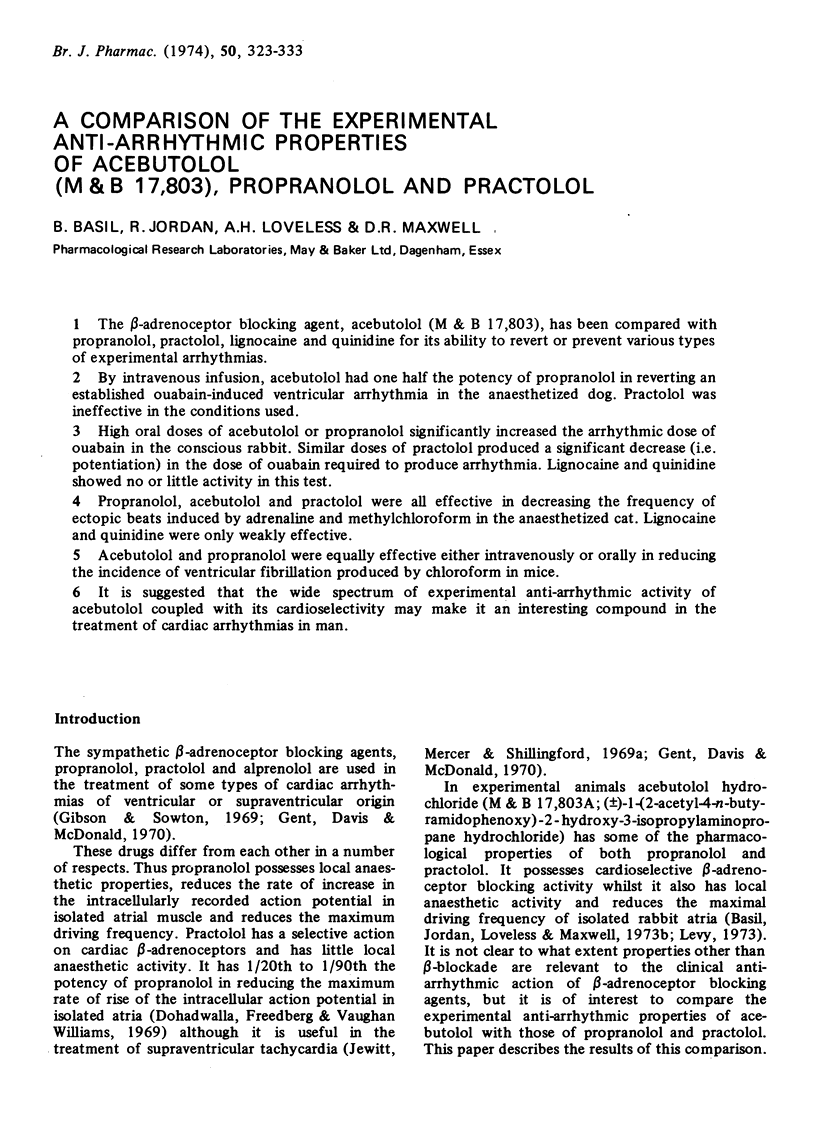
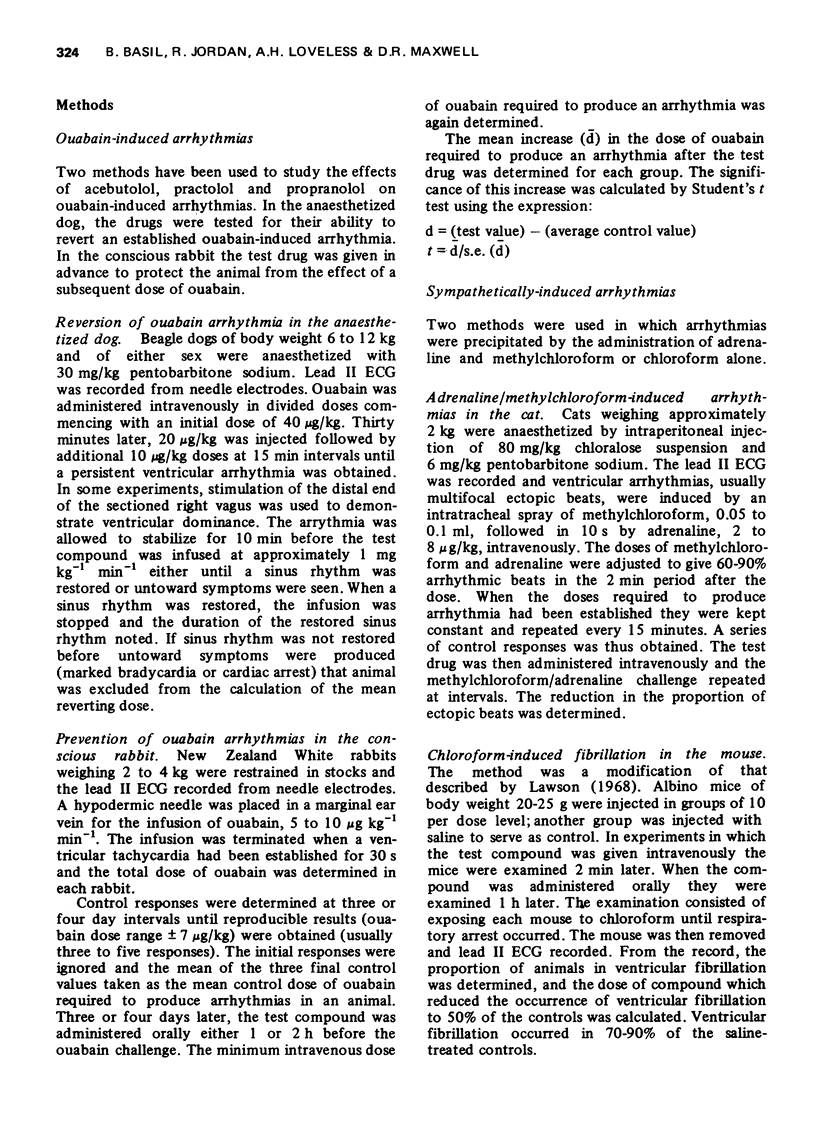
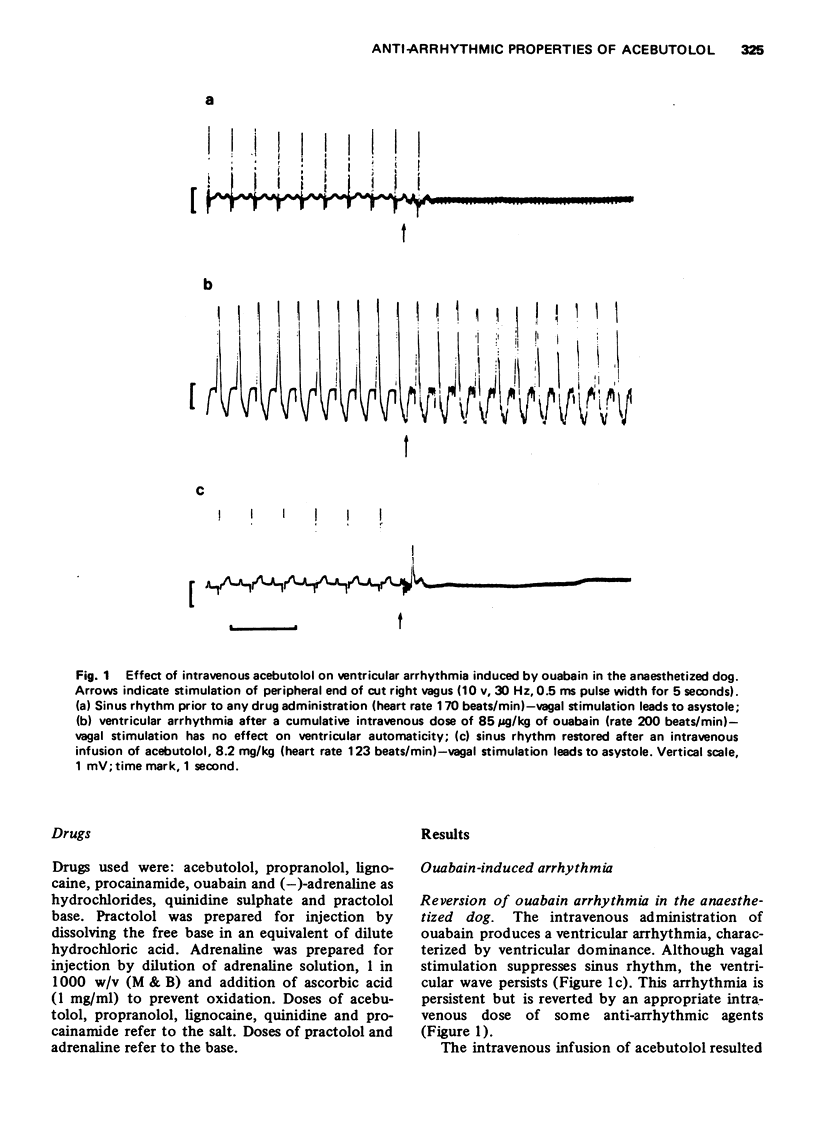
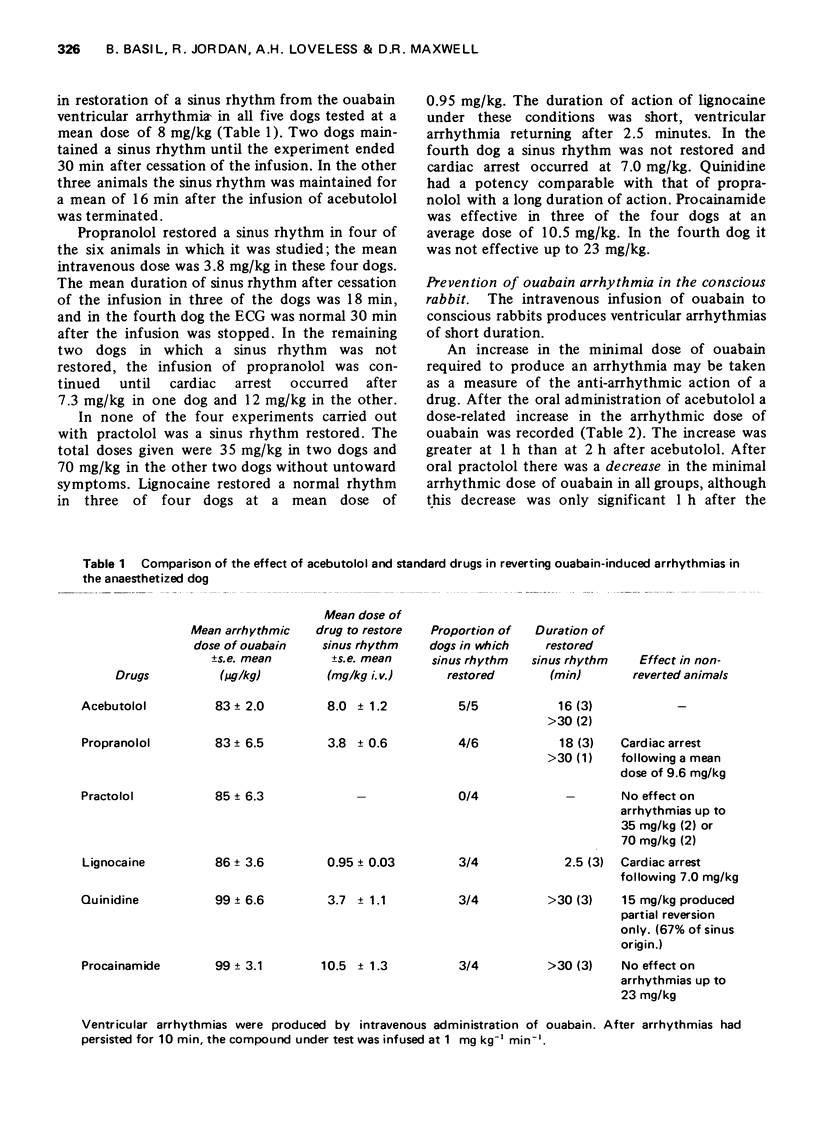
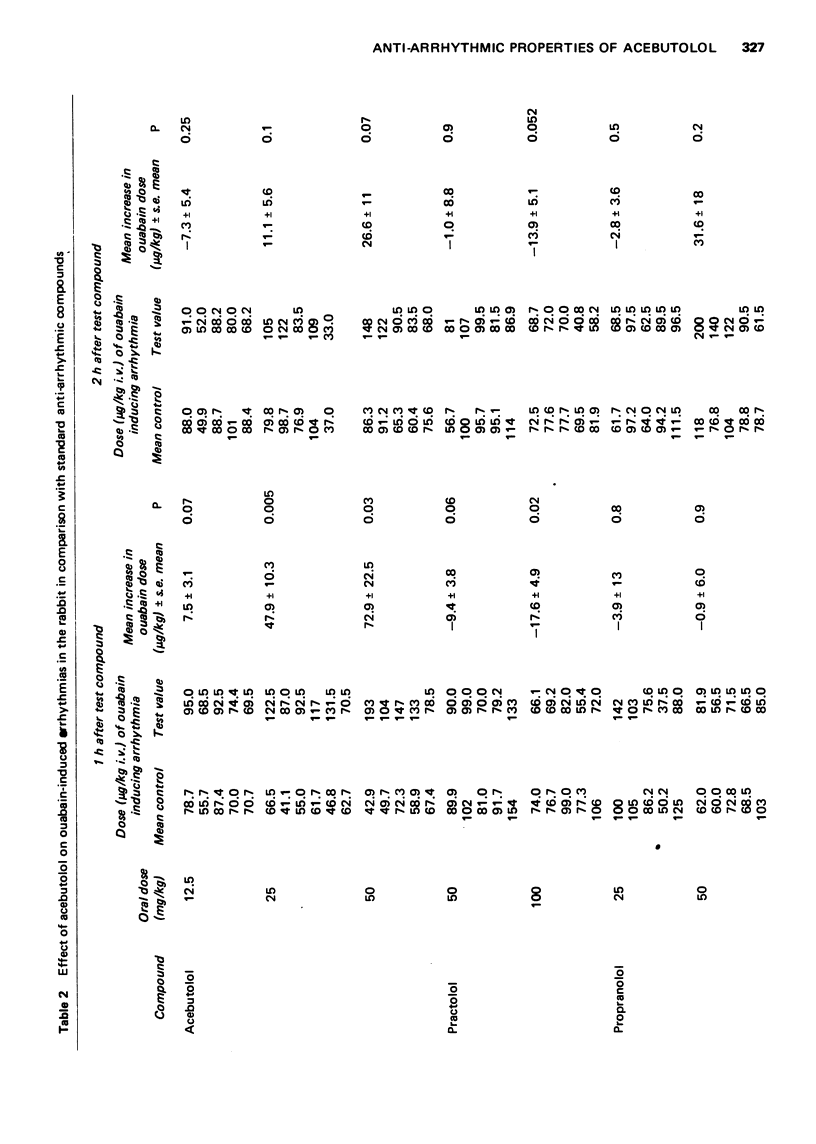
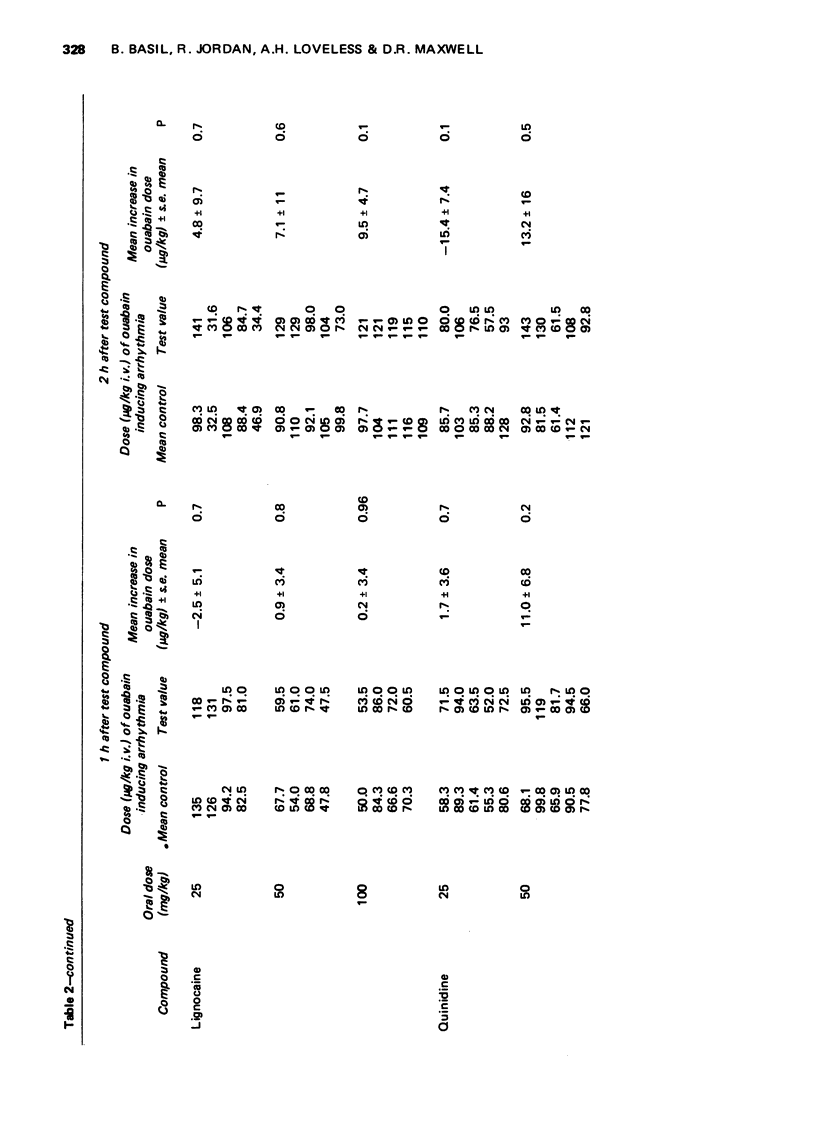

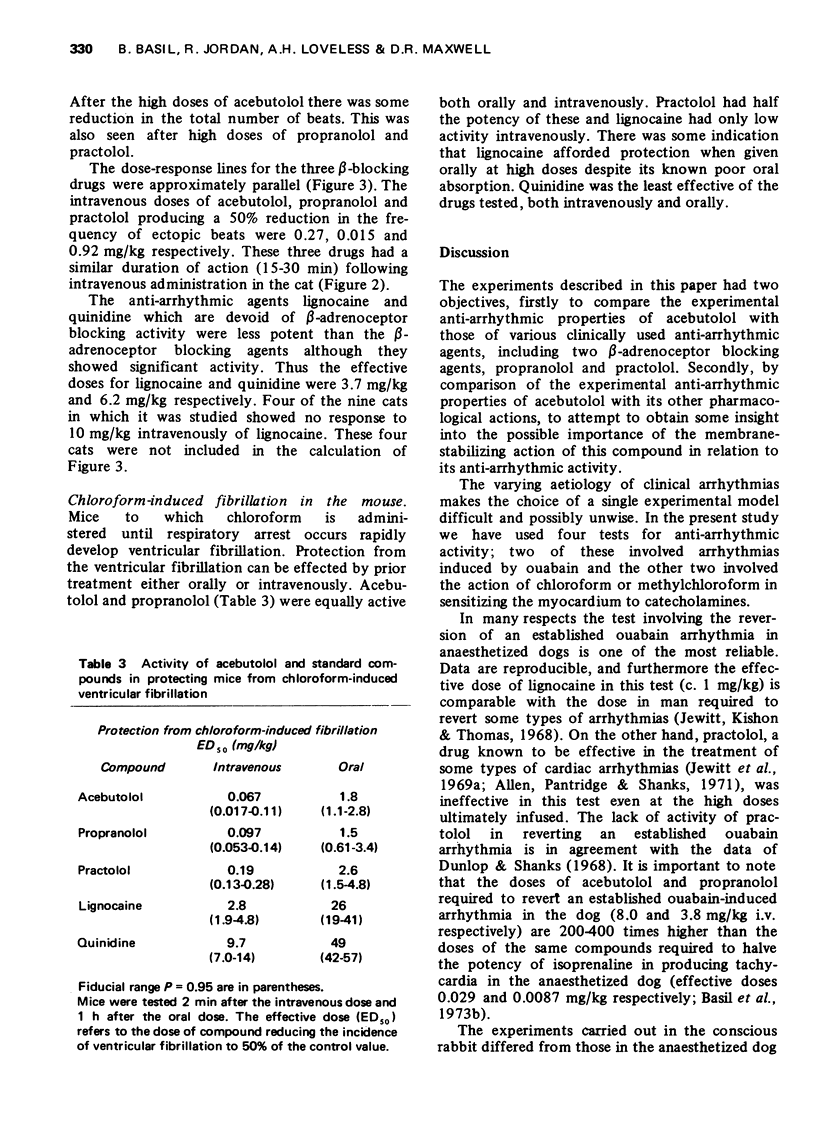
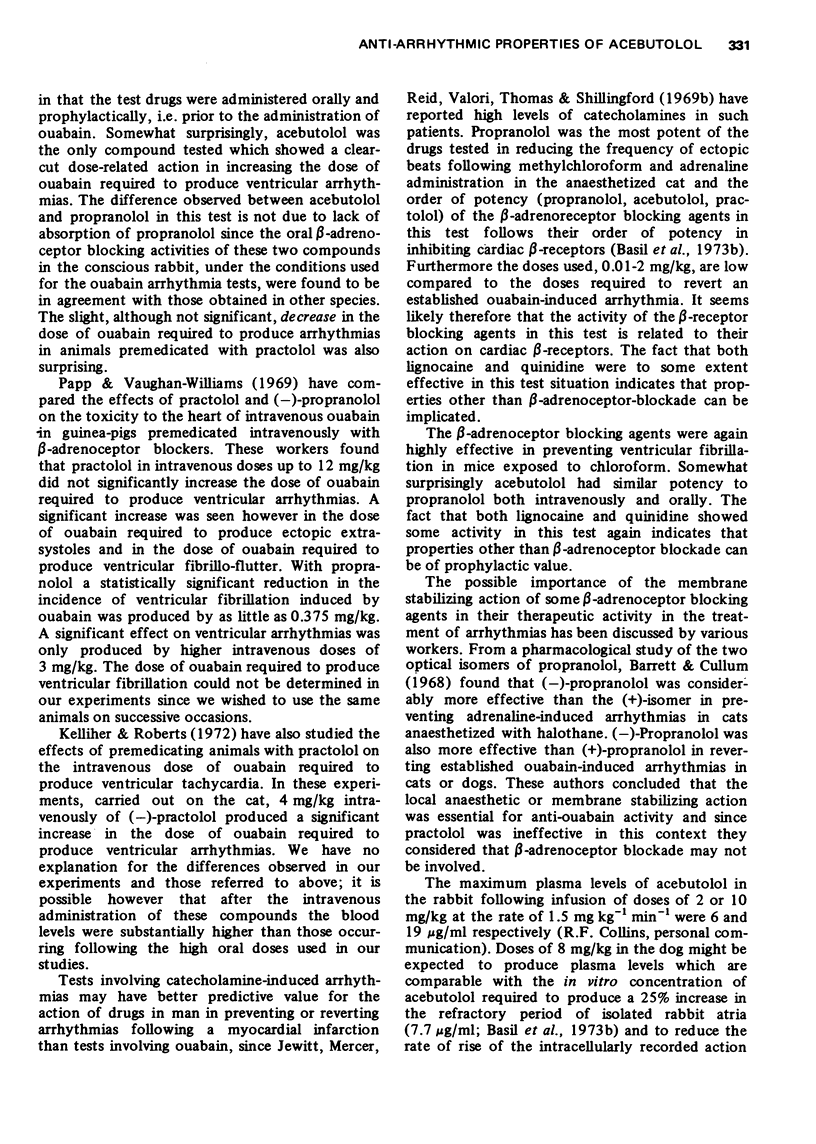
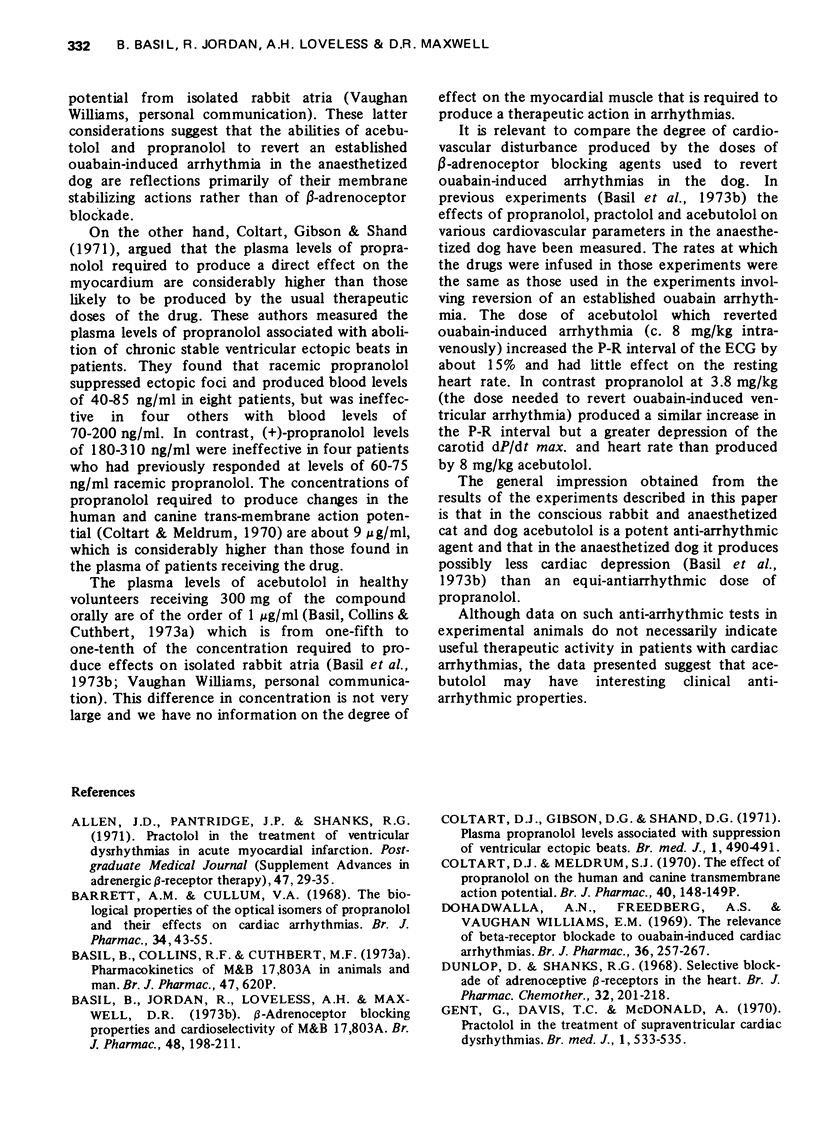
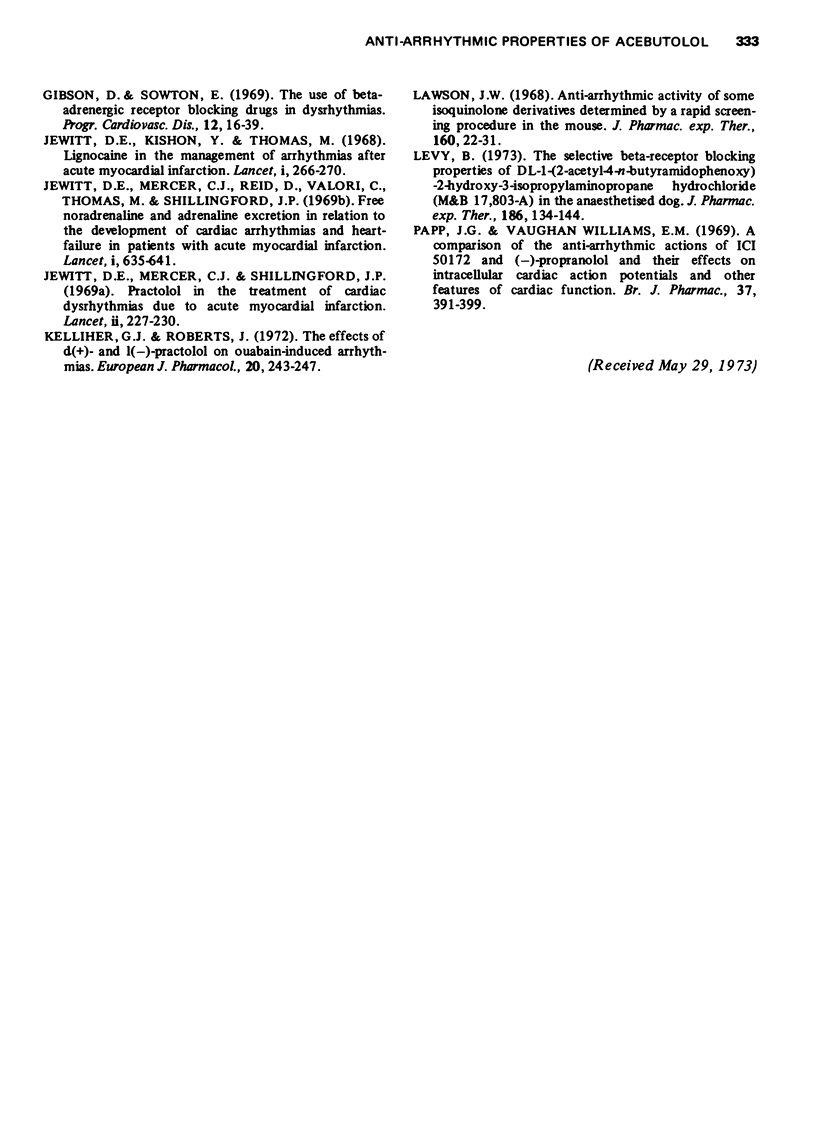
Selected References
These references are in PubMed. This may not be the complete list of references from this article.
- Basil B., Collins R. F., Cuthbert M. F. Pharmacokinetics of M&B 17,803A in animals and man. Br J Pharmacol. 1973 Mar;47(3):620P–620P. [PMC free article] [PubMed] [Google Scholar]
- Basil B., Jordan R., Loveless A. H., Maxwell D. R. Beta-adrenoceptor blocking properties and cardioselectivity of M & B 17,803A. Br J Pharmacol. 1973 Jun;48(2):198–211. doi: 10.1111/j.1476-5381.1973.tb06906.x. [DOI] [PMC free article] [PubMed] [Google Scholar]
- Coltart D. J., Gibson D. G., Shand D. G. Plasma propranolol levels associated with suppression of ventricular ectopic beats. Br Med J. 1971 Feb 27;1(5747):490–491. doi: 10.1136/bmj.1.5747.490. [DOI] [PMC free article] [PubMed] [Google Scholar]
- Coltart D. J., Meldrum S. J., Hamer J. The effect of propranolol on the human and canine transmembrane action potential. Br J Pharmacol. 1970 Sep;40(1):148P–149P. [PMC free article] [PubMed] [Google Scholar]
- Dohadwalla A. N., Freedberg A. S., Vaughan Williams E. M. The relevance of beta-receptor blockade to ouabain-induced cardiac arrhythmias. Br J Pharmacol. 1969 Jun;36(2):257–267. doi: 10.1111/j.1476-5381.1969.tb09503.x. [DOI] [PMC free article] [PubMed] [Google Scholar]
- Dunlop D., Shanks R. G. Selective blockade of adrenoceptive beta receptors in the heart. Br J Pharmacol Chemother. 1968 Jan;32(1):201–218. doi: 10.1111/j.1476-5381.1968.tb00444.x. [DOI] [PMC free article] [PubMed] [Google Scholar]
- Gibson D., Sowton E. The use of beta-adrenergic receptor blocking drugs in dysrhythmias. Prog Cardiovasc Dis. 1969 Jul;12(1):16–39. doi: 10.1016/0033-0620(69)90033-4. [DOI] [PubMed] [Google Scholar]
- Jewitt D. E., Mercer C. J., Shillingford J. P. Practolol in the treatment of cardiac dysrhythmias due to acute myocardial infarction. Lancet. 1969 Aug 2;2(7614):227–230. doi: 10.1016/s0140-6736(69)90001-4. [DOI] [PubMed] [Google Scholar]
- Jewitt D. E., Reid D., Thomas M., Mercer C. J., Valori C., Shillingford J. P. Free noradrenaline and adrenaline excretion in relation to the development of cardiac arrhythmias and heart-failure in patients with acute myocardial infarction. Lancet. 1969 Mar 29;1(7596):635–641. doi: 10.1016/s0140-6736(69)92009-1. [DOI] [PubMed] [Google Scholar]
- Kelliher G. J., Roberts J. The effect of d(+)- and 1(-)-practolol on ouabain-induced arrhythmia. Eur J Pharmacol. 1972 Nov;20(2):243–247. doi: 10.1016/0014-2999(72)90156-2. [DOI] [PubMed] [Google Scholar]
- Lawson J. W. Antiarrhythmic activity of some isoquinoline derivatives determined by a rapid screening procedure in the mouse. J Pharmacol Exp Ther. 1968 Mar;160(1):22–31. [PubMed] [Google Scholar]
- Levy B. The selective beta receptor blocking properties of DL-1-(2-acetyl-4-n-butyramidophenoxy)-2-hydroxy-3-isopropylaminopropane HC1 (M & B 17803-A) in the anesthetized dog. J Pharmacol Exp Ther. 1973 Jul;186(1):134–144. [PubMed] [Google Scholar]
- Papp J. G., Williams E. M. A comparison of the anti-arrhythmic actions of I.C.I. 50172 and (--)-propranolol and their effects on intracellular cardiac action potentials and other features of cardiac function. Br J Pharmacol. 1969 Oct;37(2):391–399. doi: 10.1111/j.1476-5381.1969.tb10576.x. [DOI] [PMC free article] [PubMed] [Google Scholar]


